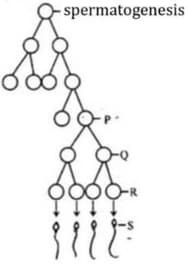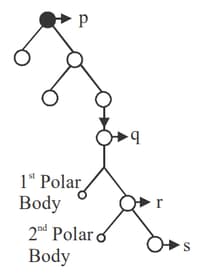EASY
Earn 100
The spermatogonia which undergo meiosis are known as
(a)Sperm
(b)Spermatid
(c)Secondary spermatocyte
(d)Primary spermatocyte
50% studentsanswered this correctly
Important Questions on Reproduction in Lower and Higher Animals
EASY
Which one of the following statements is true with respect to human ovary?
EASY
The process of conversion of non-motile spermatids into motile spermatozoa is called
EASY
Identify the cells represented as and in the given schematic representation of spermatogenesis.

EASY
Find out the CORRECT sequence of spermatogenesis.
EASY
Which of the following event is not associated with ovulation in human female?
EASY
The acrosome of a sperm is a derivative of _______.
MEDIUM
If in a normal Menstruating woman, menses occur April, what will be expected date of Ovulation?
MEDIUM
What is the correct sequence of sperm formation ?
MEDIUM
Which of the following cells during gametogenesis is normally diploid?
MEDIUM
Statement (S) : There is surge in Ovulatory phase.
Reason (R): surge induces the growth and maturation of follicles in the Ovary.
The correct answer is
MEDIUM
In the given diagram of human sperm, identify the functions of the labelled parts. and

MEDIUM
Identify the cells represented as and in the schematic representation of Oogenesis, shown below and choose the correct option.

EASY
In human females, when does oogenesis begin?
EASY
What is the role of acrosin?
MEDIUM
The difference between spermiogenesis and spermiation is
MEDIUM
What is spermatogenesis? Describe the various phase of spermatogenesis in human being with diagrams.
MEDIUM
Explain the process of spermatogenesis in humans.
EASY
During oogenesis in mammals, the second meiotic division occurs
MEDIUM
Study the following
| S.No | Cell | Formed by | State |
| I. | Spermatogonia | Mitosis | Diploid |
| II. | Spermatid | Meiosis I | Haploid |
| III. | Oogonia | Meiosis | Diploid |
| IV. | Secondary oocyte | Meiosis I | Haploid |
Among the above, correct combination are
EASY
Select the correct option of haploid cells from the following groups:

